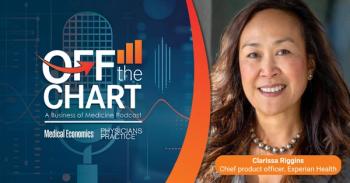
The Evolution of the Medical Biller
Based on the evolution of the field, medical billers have to adapt or they'll find themselves out of a job.
"The best part about being a medical biller is that a machine will never be able to replace your job." This is what my class of eager recently graduated medical billers was told by the instructor in 2000. Little did anyone know that this statement would eventually be invalidated.
In the past 16 years, technology is quickly replacing what used to be medical billing jobs. In the name of lowering overhead, due to the cuts in healthcare reimbursement by all insurance carriers, and the rise in the cost of healthcare generally, medical practices are using lean administrative teams to maximize revenue. Doctors are constantly grappling with how to balance providing quality patient care and keeping overhead costs low. One way of accomplishing this balance is the use of medical billing technology.
Today, there are medical practices that have 100 doctors and a billing department of only two people, and a total combined - patient and insurance - accounts receivable of $20k. How is this possible? The software is keeping track of every single account. Nothing is slipping through the cracks. The days of sending paper claims and patient statements are gone. Patients are required to have a credit card on file. When they have a deductible, their coverage ends, or any of the other myriad of reasons insurance companies offset the payment of service to patients, doctors are now able to charge their patients real-time and send them a receipt instantly, without the expense of stamps, paper, or a team of people. Further, all accounts are reconciled to the bank so every patient account is accounted for.
The days of creating superbills are also over. Hours, reams of paper, along with the daily struggle of lost superbills that ultimately delayed billing and decreased revenue have been laid to rest due to technological advances. Innovative billing software put the job of actual billing (generating claims for electronic submission) on the doctor. Now that the majority of doctors have adapted, mostly, to EHR systems, coding has now been incorporated into this process. Originally, doctors found this aspect of the EHR software complicated, but it is getting easier. This is especially true of medical practices that use very few procedure codes. It is only a matter of time before medical billing software is savvy enough to code complicated surgical and medical procedures, without the arduous process of opening a coding book or consulting the CCI edits.
By the doctors doing their own coding through advanced EHR software (depending on the size of the practice) overhead costs are dramatically decreased. Private practices who are keeping up with the ever growing technological advances in medical billing are reaping the monetary rewards. Hospitals, which tend to integrate technological billing changes more slowly due their sheer size, could save millions of dollars a year in overhead expenses by instituting more of the type of technology that is already out there.
Medical billing is moving in the direction of medical collections solely. There will be one or two people in charge of making sure the entire automated process of medical billing is working as it should, and that patients still have a real person to talk to regarding their medical billing issues. This, just like in every arena where technology has taken over, will decrease the amount of medical billers that a medical practice needs. However, this will require the medical billers of the future to be highly skilled and experienced in the language and personality of the medical insurance world (this means quick navigation of insurance IVR systems, knowing the correct questions to ask once you actually get a representative on the phone, knowing how to correct your claim denials in the clearinghouse and quickly get claims resubmitted, etc.) in order to collect on all outstanding patient accounts.
You might be thinking, what is the catch? The only catch is doctors' willingness to adapt, learn, and change their practices with this technology. Some doctors struggle with basic EHR systems, saying the coding and billing features of billing software is complicated. The use of procedure codes with vague descriptions are categorized in a way that is not necessary intuitive for doctors. This too is improving. Now, billing software possess higher level coding categories. Instead of the doctor having to memorize codes, the categories provided are more intuitive, and the software performs the coding and billing in the background.
As for the medical billers of the future, they need to learn the art of medical collections, sooner rather than later. The current wave of technology is slowly but steadily encroaching on the medical billing tasks that they have known and mastered, most of which will soon be a thing of the past.
Shari Covington has built and supervised private practice medical billing departments for over 10 years. She received her law degree from Franklin Pierce Law Center in 2010. Ms. Covington specializes in streamlining private office medical billing practices and procedures. She can be reached at
Newsletter
Optimize your practice with the Physicians Practice newsletter, offering management pearls, leadership tips, and business strategies tailored for practice administrators and physicians of any specialty.









